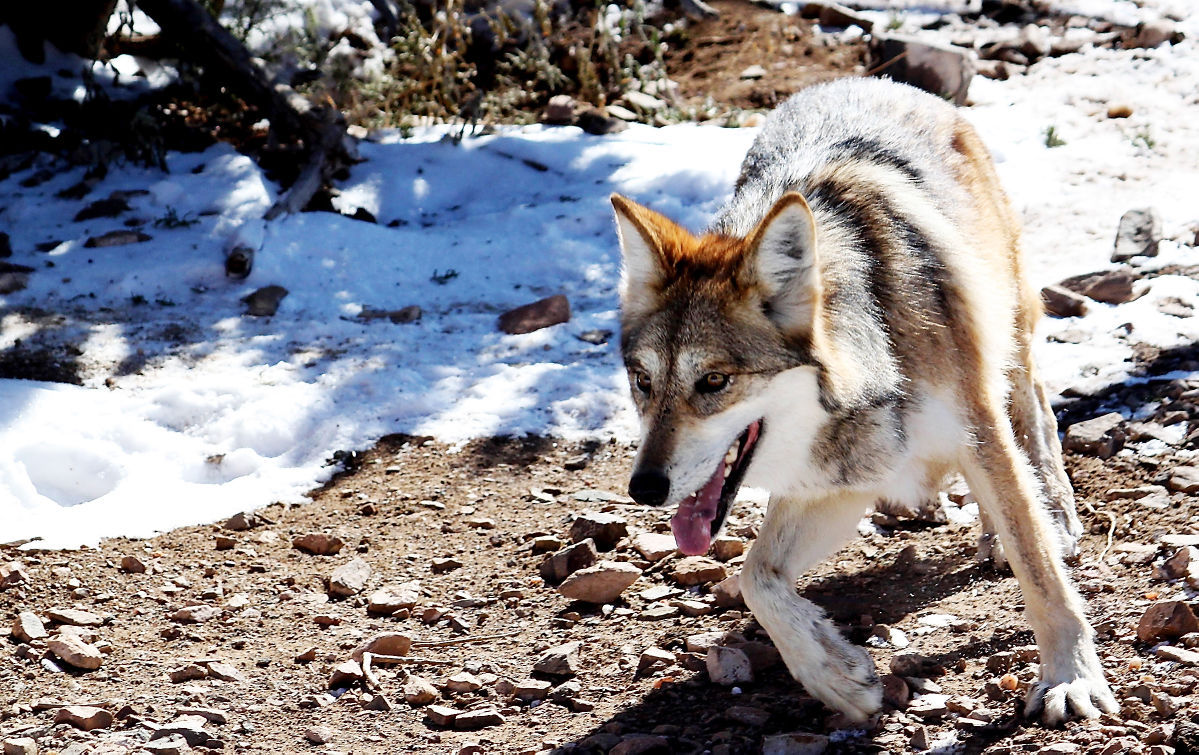The
Utah Division of Wildlife Resources is doing genetic testing on what is
thought to be a female gray wolf found dead a month ago in a trap meant
for a coyote.
Kimberly
Hersey, mammal conservation coordinator for the Utah Division of
Wildlife Resources, confirmed the Nov. 7 incident that was reported
recently in which a trapper found the dead animal and reported it to
authorities. Hersey said testing is still being done to confirm that it
is in fact a wolf and not a dog-wolf hybrid. If it is a wolf, it will be
the second time a wolf was killed in Utah in less than a year,
highlighting how the state manages — and would like to manage — wolves.
“Thus
we need to know if it was indeed a wolf and if any additional wolves or
wolf-like animals are in the area,” Hersey wrote in an email.
“Biologists have repeatedly visited the area looking for signs such as
tracks and scat. They have also used a howling technique to see if any
animals in the area respond.”
But biologists have not found evidence of additional animals so far, she said.
“The agency encourages people to report any sightings of suspicious animals,” Hersey said.
No recent wolf sightings had been reported to DWR from the area — just false alarms.
Determining
the animal’s identity is important so the DWR complies with the Wolf
Management Act, which gives authority to the agency to prevent any packs
of wolves from establishing within the delisted portion of Utah — which
includes Cache and Rich counties.
Robert
Schmidt, a Utah State University associate professor of environment and
society in the Quinney College of Natural Resources and a wolf expert,
talked about what he sees as the significance of the Randolph incident.
“We
should never have to say again we had no idea a wolf might be in the
area. Therefore, we need to think about what we should and should not
allow,” Schmidt said. “Perhaps there should be no use of neck snares and
only non-lethal traps that allow animals to be captured.”
The report of the Randolph incident comes after a wolf nicknamed Echo was mistakenly killed
by a hunter who thought it was a coyote on Dec. 28, 2014. That
incident, the killing of the first wolf seen near the Grand Canyon in 70
years, drew criticism from pro-wolf advocates.
Wolves in Utah
In
1995, wolves were reintroduced into Yellowstone and central Idaho, and
since then the population has grown quickly and spread, with some coming
into neighboring states like Utah, according to Hersey.The first modern
wolf in Utah was captured in Morgan County and was returned to Grand
Teton National Park in 2002. Since then, there have been single or
multiple wolves confirmed on about 10 occasions — most in counties
bordering Idaho or Wyoming, although some have roamed farther.There are
currently no known wolf packs in Utah, Hersey said.
“It’s our responsibility to follow up on sightings and gather in the information we need to,” Hersey said.
Wolves
in much of the Beehive State are on the Endangered Species List and
under federal control, according to information on the DWR’s website.
In
2011, Congress delisted wolves from the endangered species list in
several Western states, including a small northeastern portion of Utah,
which includes Cache and Rich counties.
The
delisting — however small — gave Utah the authority to manage, capture
and kill wolves inside this delisted zone. The DWR has authority, thanks
to the Wolf Management Act, to prevent wolf packs from establishing in
the zone. The Act also directs the DWR to request the U.S. Fish and
Wildlife Service to remove wolves from areas in Utah that are not in the
delisted zone.
According to
the DWR website, Utah officials want to see wolves delisted across the
entire state so they — not the federal government — can manage the
population.
“It’s appropriate that it’s transferred back to the state where we have the resources to manage the species,” Hersey said.
Even
as the agency waits for potential statewide control, the DWR has come
up with a management plan, but only part of it is being implemented
because of DWR’s limited control over wolves. The management plan was
written shortly after the first instance of wolves appearing in the
state, Hersey said.
“It was
trying to be proactive, having a plan in place so that when management
authority was transferred from the federal government to the state, we
wouldn’t suddenly say, ‘What do we do now,’” Hersey said, noting the
plan would likely be revised if and when Utah gets full control over
U.S. Fish and Wildlife of the wolf population in Utah.
Schmidt
did not have a comment on the plan, but said the Randolph incident is a
reminder that Utah needs a plan to deal with wolves.
“We
should all be on the same page, whether you’re a livestock producer or
an employee from the DWR,” Schmidt said. “We all recognize wolves are
currently and in the future going to be part of our landscape in Utah
and we have to know how to live with them, and wolves have to know how
to live with us.”
The USU associate professor said it’s part a learning curve in a state that is just getting to know wolves.
“All
of these wolves come from our sister states so we’re only going to have
more,” Schmidt said. “We’d better come up with a system where everyone
is on the same page so we know that wolves are out there and we know
what to do when a wolf is caught and minimize the chance that a wolf is
accidentally killed.”
source
source


 Susan Montoya Bryan
Susan Montoya Bryan
No comments:
Post a Comment